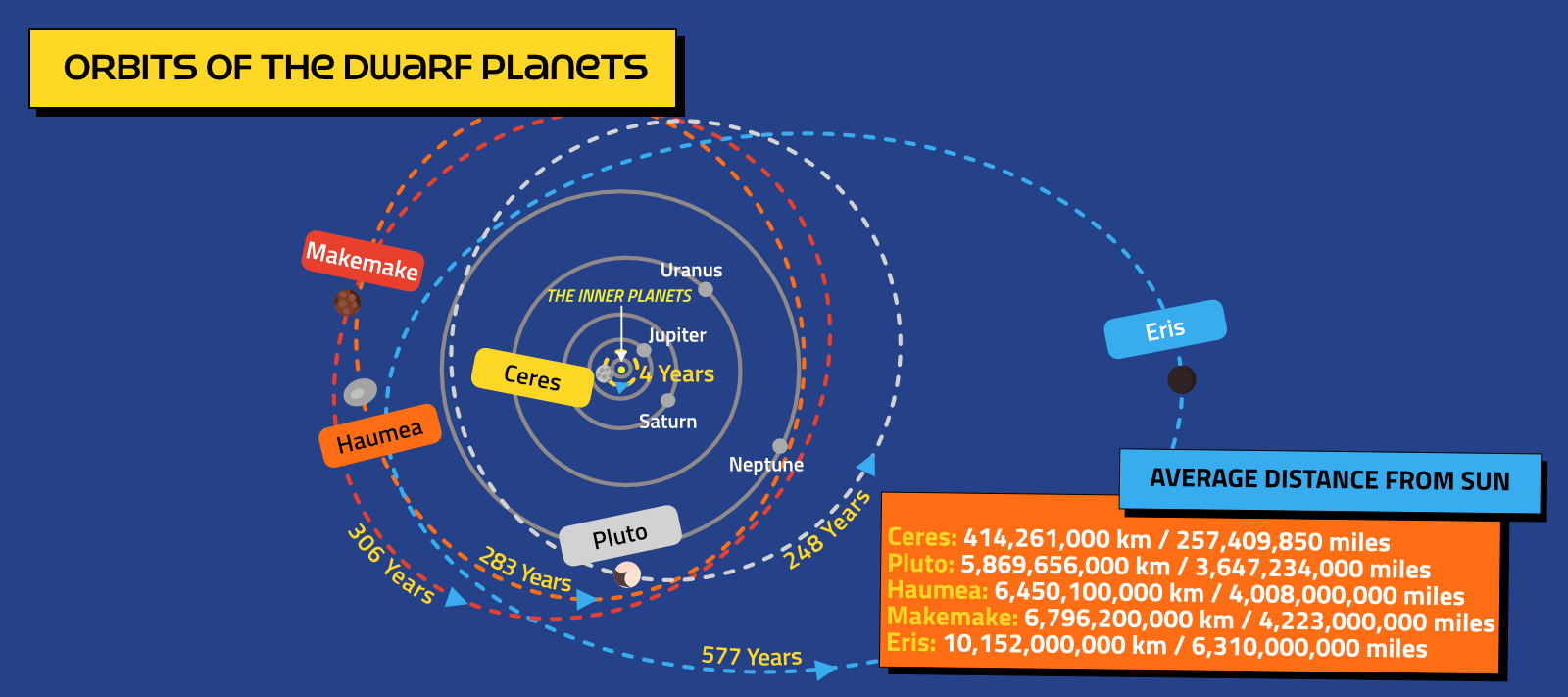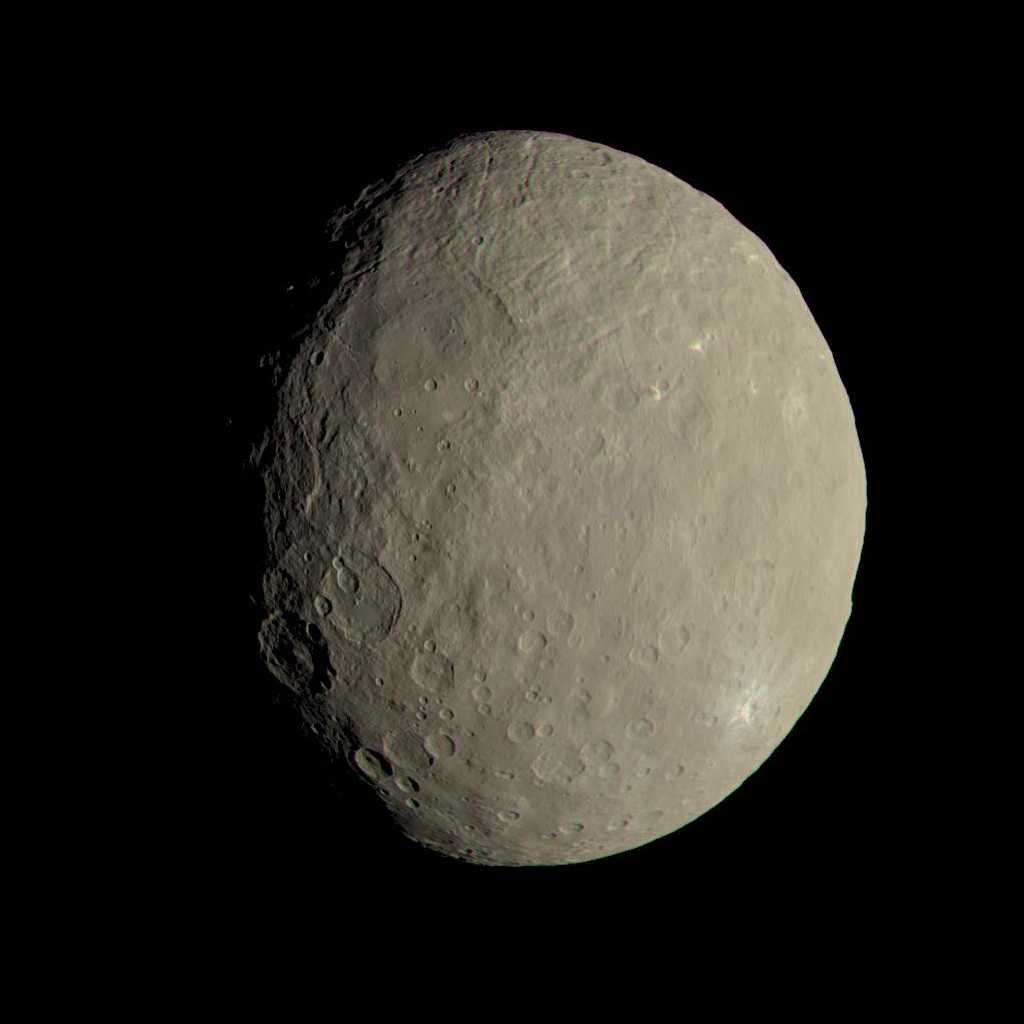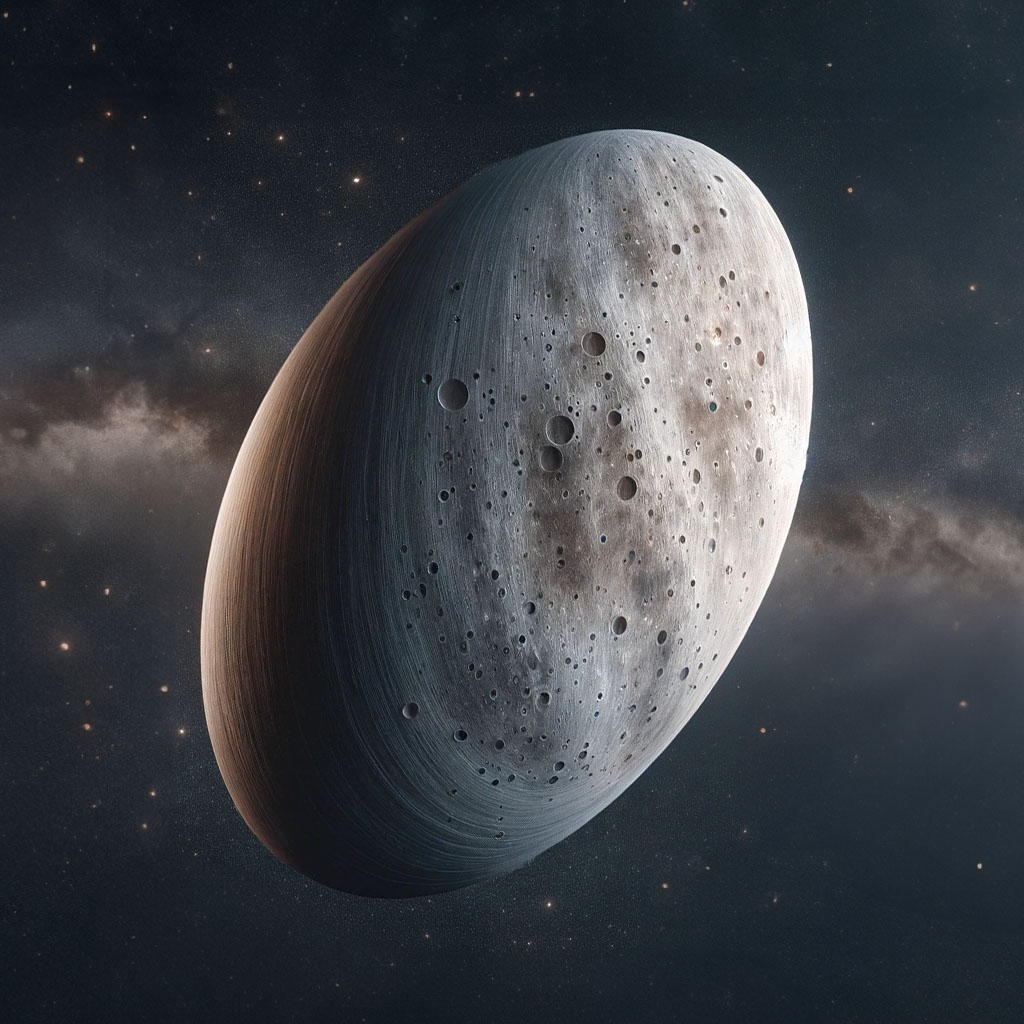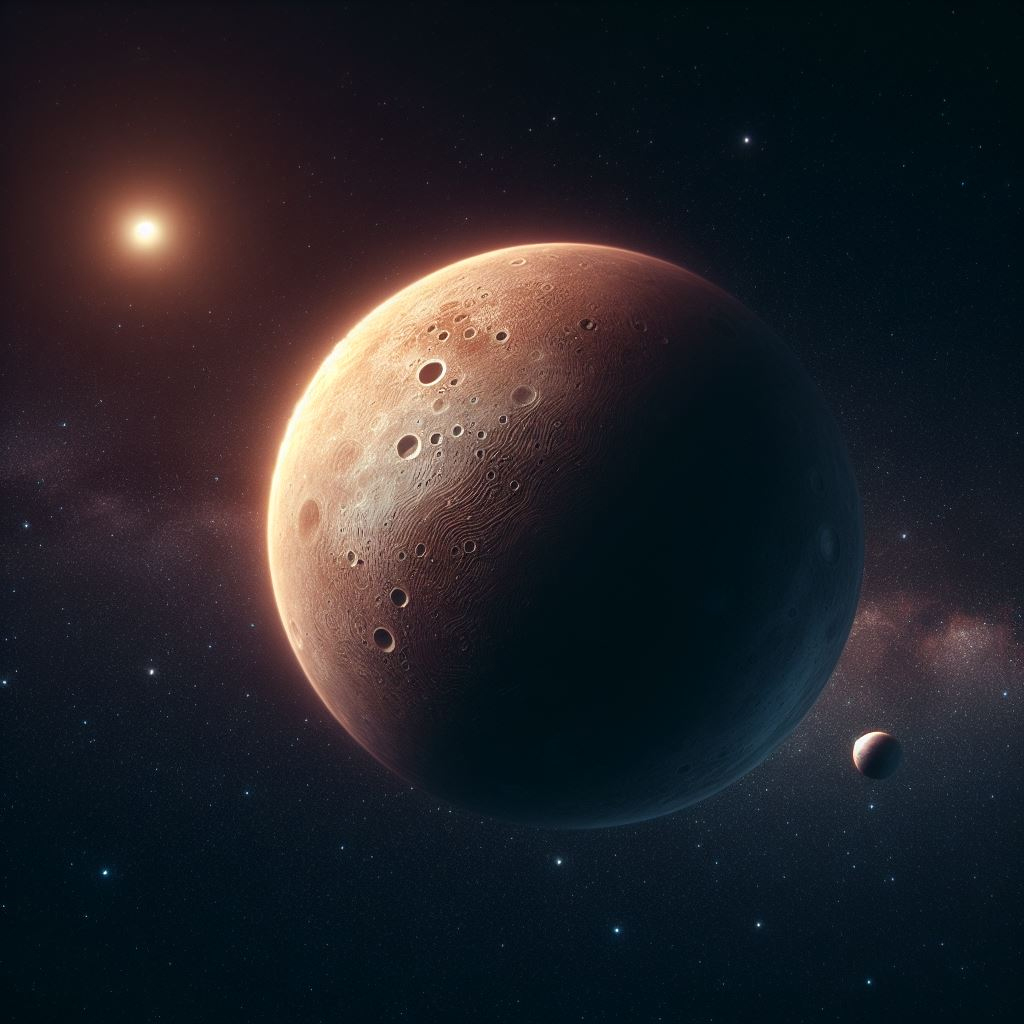The Dwarf Planets
The Solar System contains five objects that are recognised as dwarf planets. These are Ceres, Pluto, Haumea, Makemake and Eris. A dwarf planet is an object that orbits the Sun, is large and massive enough to be mostly spherical in shape, and that orbits in an area with other similar objects. The category of dwarf planet was created in 2006 by the International Astronomical Union (IAU) after the discovery of several objects similar to Pluto. Rather than categorising the new objects as planets, they decided to create a new category for them. This also meant that Pluto, which was previously recognised as a planet, and Ceres, which was previously recognised as an asteroid, were reclassified as dwarf planets.
All current dwarf planets, apart from Ceres, orbit beyond the orbit of Neptune. Those ones can also be called Trans-Neptunian Objects (TNOs). Ceres orbits the Sun in the Asteroid Belt, a region of thousands of asteroids situated between the orbits of Mars and Jupiter. Although there are five objects currently classified as dwarf planets, the actual quantity may be much higher. There are several objects already known of which could fall under the category, and plenty more waiting to be discovered.

Want to know more about the dwarf planets? Here's some dwarf-sized snippets about them!
Ceres is the smallest of the five recognised dwarf planets. It's also the closest one to Earth as it orbits in the Asteroid Belt between Mars and Jupiter. It was discovered on 1st January 1801 by an Italian priest and astronomer named Guiseppi Piazzi. Ceres was originally classified as a planet, but after the discovery of other objects in the same region between Mars and Jupiter, the decision was made to call them asteroids instead. Ceres, the largest object in the Asteroid Belt, remained as an asteroid until 2006 when it became a dwarf planet. All other asteroids are still asteroids.
Ceres has been visited by the Dawn spacecraft. Dawn discovered that Ceres has bright spots of salt on its surface, quite possibly exposed from below its surface as a result of meteorite impacts. Ceres takes 4 years and 222 days to take a full trip around the Sun.

Probably the most well-known of the dwarf planets is Pluto. Discovered on 18th February 1930 by an American astronomer named Clyde Tombaugh, Pluto was recognised as the ninth planet in the Solar System until its reclassification in 2006. It usually orbits beyond Neptune, apart from times when it doesn't! Sometimes it crosses Neptune's orbit and is actually closer to the Sun than Neptune. Pluto has five moons. Its largest is Charon which is situated only 19,596 km (12,176 miles) from Pluto. The two objects rotate around an invisible axis between them. Its other moons are Styx, Nix, Kerberos and Hydra.
Although Pluto is the largest of the dwarf planets, it is smaller than all of the main planets and also smaller than Earth's moon. It was visited by the New Horizons spacecraft in 2015 which sent back images of a mountainous icy world with a thin atmosphere of nitrogen. Pluto takes 248 years to get around the Sun.

Haumea was the first of the new objects to be discovered that led to the creation of the dwarf planet category. A team of astronomers led by Mike Brown at Caltech first spotted it in December 2004, just after Christmas, and nicknamed it Santa. Its two moons discovered later were nicknamed Rudolph and Blitzen. They are now called Hiʻiaka and Namaka. The existence of the new object though wasn't announced until July 2005, and this was by a different group of astronomers. This other team, led by José Luis Ortiz Moreno in Spain, saw it in a photograph taken two years earlier but, rather cheekily, instead of making their own new observations of it to confirm its existence, they used observations that they found online by Mike Brown's team!
Haumea is the oddest-shaped of the dwarf planets. Rather than being ball-shaped, it's more of rugby ball or American football ball shape. So, still shaped like a ball, but not a spherical one. The reason for this is likely due to its rapid rotation as it takes only 3 hours and 55 minutes to spin on its axis. It orbits the Sun in 283 years. So, its days are short and dizzying, while its years are long. But they're not the longest years...

Pronounced "Macky-Macky", Makemake is thought to be reddish-brown in colour. It was discovered on 31st March 2005 by a team led by Mike Brown at Caltech, California. As it was found just after Easter, it was nicknamed Easterbunny. Its official name still has an association with Easter as Makemake is the creation god of the Rapa Nui people of Easter Island.
Makemake has one moon, currently nicknamed MK2. Makemake has quite a slow rotation, taking 22 hours and 50 minutes to spin once on its axis. It takes over 306 years to complete a full journey around the Sun.

If you want to blame any object for Pluto no longer being a planet, blame Eris! This object was discovered on 5th January 2005 by Mike Brown's Caltech team of planet-spotters. Eris has a greater mass than Pluto and was initially thought to be larger than it, although more recent measurements reveal Eris is slightly smaller. Nicknamed Xena, after television's Xena: Warrior Princess, it was widely believed that it would become the Solar System's tenth planet. After all, if Pluto is one, then Xena/Eris must be one too!
Instead, astronomers at the International Astronomical Union decided they didn't really want Eris, and other similar objects, to become a planet. So, they invented the dwarf planet category, put Eris into it, and changed Pluto's status too.
Eris is currently the most distant of the recognised dwarf planets. It has a highly elliptical and inclined orbit, and takes a whopping 557 years to orbit the Sun. It has one moon, named Dysnomia.

Potential Dwarf Planets
In addition to the worlds currently recognised as dwarf planets, there are likely to be several others. Astronomers already know of other similar shaped and sized worlds out in the Kuiper Belt and beyond, and many already recognise them as dwarf planets.
Likely candidates include Varuna, Quaror, Orcus, Salacia, Gonggong and Sedna. It is not known when, or even if, these objects will be classified as dwarf planets.
What about Vesta? This is the second largest object in the Asteroid Belt. Why is Ceres, also in the Asteroid Belt, a dwarf planet but Vesta is not? It's all to do with shape. Although Vesta is almost spherical, it has irregularities in its shape. This suggests it never completed its formation to become a fully-fledged dwarf planet. Instead, it is more of a protoplanet.
| Average Distance from Sun | Diameter | Time to Spin on Axis (a day) |
Time to Orbit Sun (a year) |
Average Temperature | Contents of Atmosphere | |
|---|---|---|---|---|---|---|
| Ceres | 414,261,000 km
257,409,772 miles |
939 km 583 miles |
9 hours, 5 mins | 4 years, 222 days | -106 °C -159 °F |
None | Pluto | 5,869,656,000 km
3,647,234,018 miles |
2,376 km 1,476 miles |
6 days, 9 hours | 248 years | -233 °C -388 °F |
Nitrogen, Methane | Haumea | 6,450,100,000 km
4,007,905,087 miles |
1,632 km 1,014 miles |
3 hours, 55 mins | 283 years, 44 days | -240 °C -400 °F |
None | Makemake | 6,796,200,000 km
4,222,961,590 miles |
1,434 km 891 miles |
22 hours, 50 mins | 306 years, 77 days | -243 °C -405 °F |
None | Eris | 10,152,000,000 km
6,308,158,392 miles |
2,326 km 1,445 miles |
25 hours, 54 mins | 559 years, 25 days | -243 to -217 °C -405 to -359 °F |
None |





